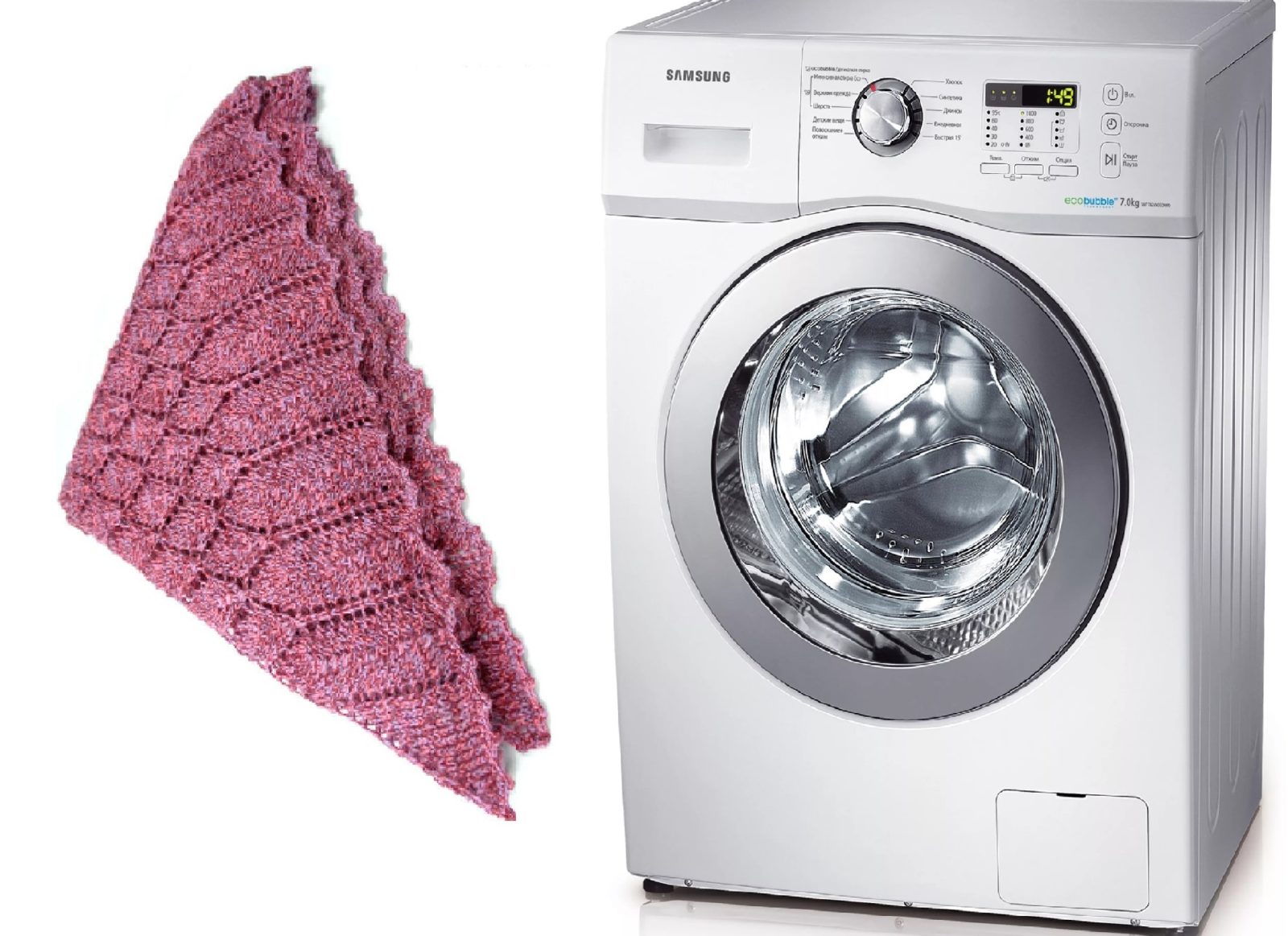How to stack laundry in a washing machine
 If you do not know how to fold the laundry in the machine, you can make a lot of trouble. In the best case, the washing machine will brake at the very beginning of the cycle, and in the worst case, it will not finish the wash at the spin cycle and will produce an appropriate error. All this will happen if too few things are loaded into the drum, or vice versa, to give an excessive load to the machine. But it is better not to experiment, but to study in advance the rules for laying the drum of the washing machine.
If you do not know how to fold the laundry in the machine, you can make a lot of trouble. In the best case, the washing machine will brake at the very beginning of the cycle, and in the worst case, it will not finish the wash at the spin cycle and will produce an appropriate error. All this will happen if too few things are loaded into the drum, or vice versa, to give an excessive load to the machine. But it is better not to experiment, but to study in advance the rules for laying the drum of the washing machine.
Cooking things
Proper placement of laundry in the drum begins with the storage, inspection and sorting of dirty things. Not everyone knows that stained and stale clothes can only be stored in containers with ventilation openings, to prevent them from getting wet and long-term storage. If you neglect the above rules, mold will appear, an unpleasant odor, and stubborn and stained spots will be difficult to remove. But you can’t get dirty things from the basket and immediately send them to the tank. You must not forget about the following actions.
- Plan the conditions for the upcoming washing - temperature, spin force.

- Divide the available clothing into batches depending on the type of linen (synthetics, cotton, delicate fabrics).
- Set aside white and light things from colored and black.
- Assess the degree of contamination of things, since heavily soiled pre-wash.
- Turn pillowcases, duvet covers, knitted and terry products inside out.
- Collect hair, animal hair from things.
A mandatory step should be checking pockets and folds. Sharp, hard, heavy and small objects, keys or coins, if they get into the drum and tank, will lead to mechanical damage, shaft wedge or clogging of the drainage system. Therefore, zippers and buttons are always fastened, and underwear, scarves and baby socks are placed in special mesh bags.
How many things to load?
When things are sorted, you can start loading them. But do not rush - you need to remember exactly what is the maximum allowable weight of dry laundry for a particular model. It is indicated on the body of the typewriter or prescribed in the technical passport of the washing machine.
It should be understood that the indicated 6 or 4 kg is the weight of cotton items. Other types of fabric may be slightly heavier or bulkier. For example, a woolen shawl when wet becomes heavier than a cotton suit similar in dry weight. Also with a volume of: 1 kg of organza or veil will occupy more than 1 kg of coarse work clothes.
The machine will record overload or underload during the spin cycle, and if it deviates too much from the norm, it will stop working for safety reasons.
 Therefore, manufacturers recommend not spending time and energy on constant weighing, but rather focusing on the fullness of the drum. Maximum load involves a full tank without tamping, so it’s enough to load things into the machine, leaving a small space as a reserve. An exception would be synthetic and woolen fabrics, which should occupy no more than ½ drum in the first case and 1/3 in the second. There is another option - to weigh the laundry and calculate 10 l of water for each kilogram.
Therefore, manufacturers recommend not spending time and energy on constant weighing, but rather focusing on the fullness of the drum. Maximum load involves a full tank without tamping, so it’s enough to load things into the machine, leaving a small space as a reserve. An exception would be synthetic and woolen fabrics, which should occupy no more than ½ drum in the first case and 1/3 in the second. There is another option - to weigh the laundry and calculate 10 l of water for each kilogram.
If you do not control the weight of the loaded things, then the hostess will not be happy with the consequences. Overloading is fraught with internal mechanical damage due to too heavy a drum, and incomplete loading will lead to powerful vibrations, microcracks and imbalance. True, many modern models provide the possibility of washing at half load, but most budget washers have a strict limit - at least 1-1.5 kg of dry laundry.
Calculate the load rate
We repeat that the load rate for each washing machine has its own, and the maximum weight must be indicated in the accompanying documentation when buying a model in a store.The maximum value depends on the design, dimensions and type of machine. So, units as standard have the following capacity:
- compact or portable (most often desktop) - from 1.5 to 3 kg of dry things in one cycle;
- narrow machines with a depth of 80 cm - 3-6 kg of laundry;
- full-sized with a depth of 85-90 cm are designed for simultaneous washing from 5 to 10 kg.
The greater the capacity of the machine, the more expensive its maintenance.
Most often, customers choose automatic machines with a maximum capacity of 5-7 kg that are “universal” in capacity. This run allows you to not store clothes for a long time and to cope with the accumulated things in a couple of cycles. Knowing exactly the capacity of your machine, you can approximately calculate the weight of things ready for loading. This will help in this list of the average mass of popular textile products:
- a bedding set of three items - 1.4 kg (sheet - 500 g, duvet cover - 700 g, pillowcase - no more than 200 g);
- bath towel - 700-800 g;
- waffle towel - about 150 g;
- tablecloth 2 * 2 m - about 500 g;
- men's shirt - 350 g;
- women's blouse - 70-100 g;
- children's t-shirt - 100 g;
- socks 1 pair - 50-60 g;
- jeans - 600-700 g;
- handkerchief - about 20 g;
- bike blanket or plaid - over 1 kg.
Using simple mathematical calculations, you can throw the accumulated laundry into several washings that are safe in weight. If an error was made, the machine will report a shortage / brute force crash or a sudden program stop in the middle of a cycle. To eliminate the imbalance, you need to turn off the machine, wait for the hatch door to unlock, open the drum and straighten the crumpled laundry, taking some of the items out or reporting them when there is a shortage of them. Then we close the door tightly and start the mode from the very beginning.
Before loading things into the washing machine, it is worth evaluating their weight and the capabilities of your machine. Then the wash will be completed on time and will not bring unnecessary trouble.
Interesting:
Reader Comments
- Share your opinion - leave a comment
Headings
Washing machine repair


For buyers
For users

Dishwasher


















Add a comment